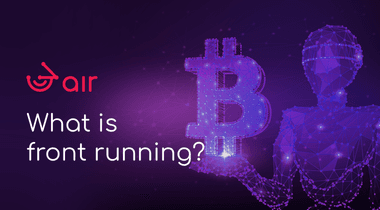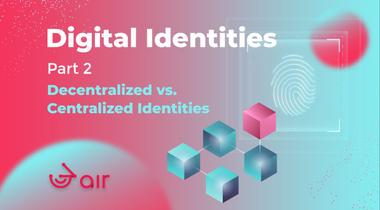Table Of Contents
Front running is a trading practice in the world of finance that involves making a trade in order to capitalize on the knowledge that the price of an asset will go up or down, based on a transaction that will happen in the future.
In the stock market, front running happens when a broker makes a trade based on market information that is not yet known to the general public—say, if one broker purchased shares in a company knowing that another company is about to make a major purchase of that same asset, or selling shares of an asset with the knowledge that the price will soon fall because a major investor plans to sell their shares.
Front-Running: How does it work?
Back when trades on the stock market were executed via pen and paper, one broker could see that a major trade was about to happen and run to put in their own order before the larger order went through. The larger order would drive up the price, and the broker could then sell the asset at a higher price to make a profit, all before the public could process that the price had gone up. This practice is illegal and likely more difficult in today’s digital age, but still exists to some degree.
What is illegal on the stock exchange is ultimately “legal” in the decentralized world, simply because cryptocurrencies are largely unregulated in many countries. In cryptocurrency, front running occurs most often when a miner is able to outbid a transaction to make a profit on a trade. The term has become somewhat of a buzz word in the Ethereum community as bots are able to front run trades in large numbers, and even retail traders can practice front running by simply knowing where to look.
How can transactions be detected before they occur?
Because of the transparent nature of the blockchain and slow transaction speeds on blockchains like Ethereum, front running has become and increasingly common problem in decentralized finance. On the blockchain, all transactions are publicly recorded and accessible. While this is typically seen as a large benefit of blockchain, it represents an unfair opportunity for miners to take advantage of information before other parties on the blockchain.
Maximum Extracted Value (MEV)
The practice of miners taking advantage of the transparency that blockchain technology offers is often called Maximum Extracted Value or Miner Extracted Value (MEV). It refers to a miner trying to increase the profit he receives for producing a block by including, excluding and changing the order of transactions in a block.
Several organizations are working to solve the issue of front running and MEV in cryptocurrency using various mechanisms. SKALE, a multi-chain network that enables app developers to deploy new projects on a more affordable, higher speed network, is one project helping to scale networks like Ethereum. SKALE offers faster transaction speeds and lower network fees, providing scalability to Ethereum while improving its capabilities to prevent common network issues and provide functionality for dApps. The protocol is also working to combat front running in cryptocurrency trading through a process called Threshold Encryption.
Threshold Encryption—the Heart of SKALE’s Front Running Prevention Mechanism
Threshold Encryption refers to an encryption system that takes the information being passed through networks or computers and scatters it into several pieces that can only be put back together with an encryption key, which only the two parties in the transaction have access to.
On a blockchain, threshold encryption lets users send encrypted transactions to the blockchain, which are then decrypted upon confirming the transaction. SKALE prevents front running and MEV entirely by using threshold encryption.
With this method, when miners or interested parties want to take advantage of the blockchain to front run transactions, they’re met with encrypted information that only becomes visible once the transaction has been confirmed in a block. This way, once a transaction has been added to a block, front running is impossible to execute.
The main benefit to SKALE’s Threshold Encryption mechanism is that it doesn’t alter the functionality of the blockchain in any way. Developers and users can still use a network like Ethereum without altering protocols or needing to create new smart contracts on dApps. It’s also free to implement, so users can automatically enjoy the safety of threshold encryption without paying an extra fee in order to do so—ultimately encouraging the use of the service.
While the transparency of blockchain technology provided solutions to antiquated ledgers, it opened the door for additional problems such as MEV and front running to thrive. The real benefit to blockchain transparency is to be able to authenticate past transactions—like being able to authenticate the source of an NFT or track the original seller of a concert ticket to make sure the ticket is real. These real-world use cases prove a need for something like blockchain, while Threshold Encryption prevents illegal activity such as front running on cryptocurrency or NFT trades. Ultimately, this makes the network more attractive for scaling and mass adoption.










